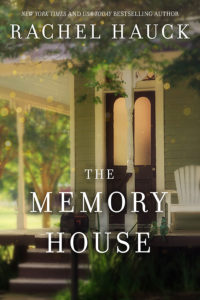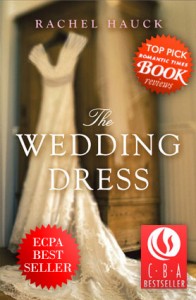 Writing Dual or Split Time Stories
Writing Dual or Split Time Stories
In honor of my new book, The Memory House, I thought I’d blog about the process or technique of writing a dual time, or split time, stories.
What is dual or split time?
I’ve heard people use the term “slip time” but that’s not an accurate picture. Slip implies slipping through time. Time travel.
In split time, the author is dividing the story between two plot lines – one set in the past, one set in the present.
While each timeline follows its own journey, the stories must merge in the end. Usually the the protagonist of the past did or possessed something that impacts the present day protagonist.
Or the present day protagonist fixes something the historical hero or heroine could not, or did not, achieve. Perhaps she rights a wrong or completes a dream of the past’s heroine.
One “must haves” of split time story development is the plot lines must mirror each other then come together, intertwining, in the end. One must significantly affect the other.
In The Writing Desk, Tenley fulfilled a dream of Birdie’s, the historical, Gilded Age heroine.
In The Memory House, the contemporary heroine, Beck, is changed by the actions of a woman she knew as a child but didn’t remember as an adult.
Everleigh, the heroine in the past, hadn’t see Beck in eighteen years yet she carefully planned something extraordinary for her.
Their stories mirrored one another in pain and loss. Their “common link” was more emotional the physical.
Why dual time frame stories?
Lisa Wingate says, “There’s something about the juxtaposition of a modern life and a life (real or fictional) of long ago, that lends reality to both tales.”
For me, I love the chance to look at the past. To imagine how the actions of our ancestors or society impacts me today. What decisions did they make that led me to this point in my life?
Components of a dual time story.
Remember you have to tell two stories. Also, it helps if you have an object, like a desk, dress, house, historical event, to build the story around.
In dual time, historical details are necessary but the “past” has more of a contemporary feel. The historical time line is more of a setting.
Each story line will have 40k – 50k words. Total 100k words. So you’re going to be writing a pretty big book. You’ll need about 10K words to tie up the two stories in the end.
Ask Yourself.
“What ties the stories together? And how?”
“If I eliminate a thing or a person, or an idea, does the book fall apart?”
“What is my central hook or theme?”
What split time is not.
Split time is not a straight up historical or straight up contemporary. You have to carve out equal space for each tale. You must also have an authentic voice for each timeline.
The spark of inspiration.
 For The Wedding Dress, the idea hit me while visiting a friend. As she talked about finding her daughter’s wedding gown, I thought, “What if there’s one wedding dress four women wore over 100 years?”
For The Wedding Dress, the idea hit me while visiting a friend. As she talked about finding her daughter’s wedding gown, I thought, “What if there’s one wedding dress four women wore over 100 years?”
Lisa Wingate says, “The Prayer Box was the result of a moment of irresistible inspiration, and the tale of those eighty-one mysterious prayer boxes came to me in not one, but two stories, or more accurately a story within a story.
I glanced across the room, saw the small prayer box that had been given to me as a gift, and thought, “What if that box contained many prayers accumulated over time? What if there were dozens of boxes? What if the letters chronicled the life of a woman who could no longer tell her story? What effect might the prayers of a faithful servant have on a modern woman who has lost faith?”
Susan Meissner came up with The Shape of Mercy after reading a diary.
For any story idea you develop, ask, “Is there an historical component I can tell? Is there a contemporary?” If so, perhaps you have a split time story brewing.
So how do you put a split time story together?
There are no real rules but I usually start with the contemporary protagonist. But in The Love Letter, I started with the historical hero.
Ask yourself which storyline will grip the reader the best.
When you leave one storyline for another, make sure you’ve concluded the snippet of the split story you’ve just written.
Leave the reader with a hook, but also satisfied with that portion of the story. Often readers can feel jerked around with split time so you want to leave them emotionally satisfied with the piece they just read.
If you’re using an object, like a desk or a dress, introduce it into the story as soon as you can. You don’t have to explain or go into great detail, just bring it in.
Around the end of the second act, the contemporary protagonist meets with a link to the past via a person or the object.
In The Memory House, I use an old cell phone to unlock secrets in the contemporary protagonist’s heart. Which allowed her to remember the historical heroine.
Alternate structure.
In A Hundred Summers by Beatriz Williams, the split story is told from a single protagonist in different 1930s timelines.
The hook between the stories is the hero, Nick.
Pacing.
Imagine writing two 40-50k stories. But you must keep each storyline in mind as you write. “How does the past shadow the present? What does the contemporary protagonist discover?”
Use the object, person, event, or prevailing truth, to help move the scenes and characters forward.
If you write two to four scenes of the historical characters, then move to the contemporary timeline and repeat.
Split time is not flashbacks?
I used flashbacks as a vehicle to understand the main protagonist in The Songbird Novels with Sara Evans.
The stories of Jade as a child helped the reader see her wounds and hurts, her motivations. There was also a teen love story that impacted the present day plot.
But flashbacks do not require a story arc or three act structure like in split time. It’s just a layer to broaden the characters.
Hope this helps! Now go write something brilliant!

Comments 4
Thanks so much for this article! Very helpful! It’s a tough style to write but such a worthwhile endeavor. I’ve finished writing my first novel in this style and am starting my second now. Love these novels! Keep up the great work!!
Hi Rachel! Do you feel like the modern protagonist has to know/learn/realize everything about the historical protagonist by the end? Or as long as the stories mirror each other, and that the modern protag’s story would not be complete without the historical, is that enough?
Author
Hey Amy, I feel like the historical and contemporary have to meet somehow. They don’t have to know everything. Certainly in the Love Letter, Chloe and Jesse never knew the real story between their ancestors. But a found letter gave them enough of a clue. It completed the journey. No one’s story is complete without the historical. We all have “history” that brought us to where we are today. The fun of split time is the contemporary protagonist gets to discover “that” history. I think it will feel emotional incomplete if the historical story doesn’t somehow touch the contemporary one is some way. You don’t have to answer all the questions but you do have to make the link complete. Makes sense. Message me privately if you want to discuss more! XO, Rachel
Pingback: S is for Split-Time – LuluBy's Reading Corner